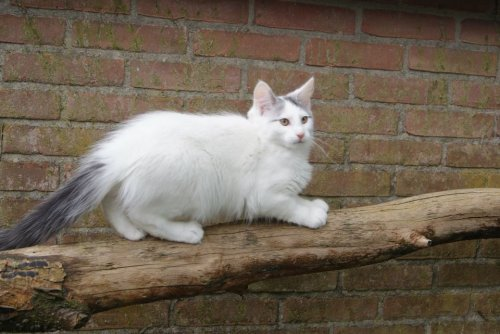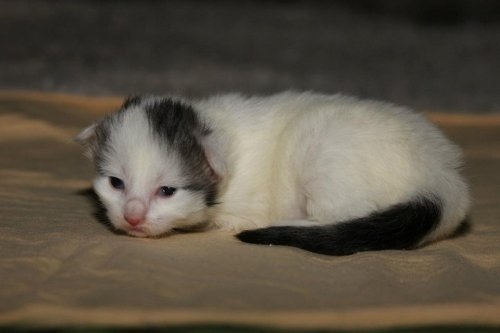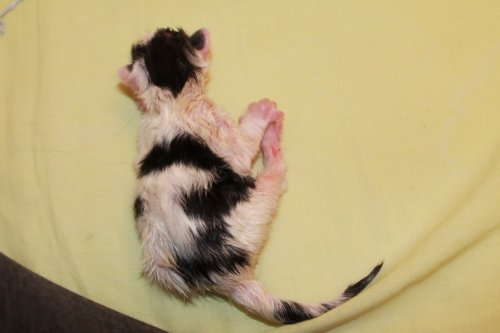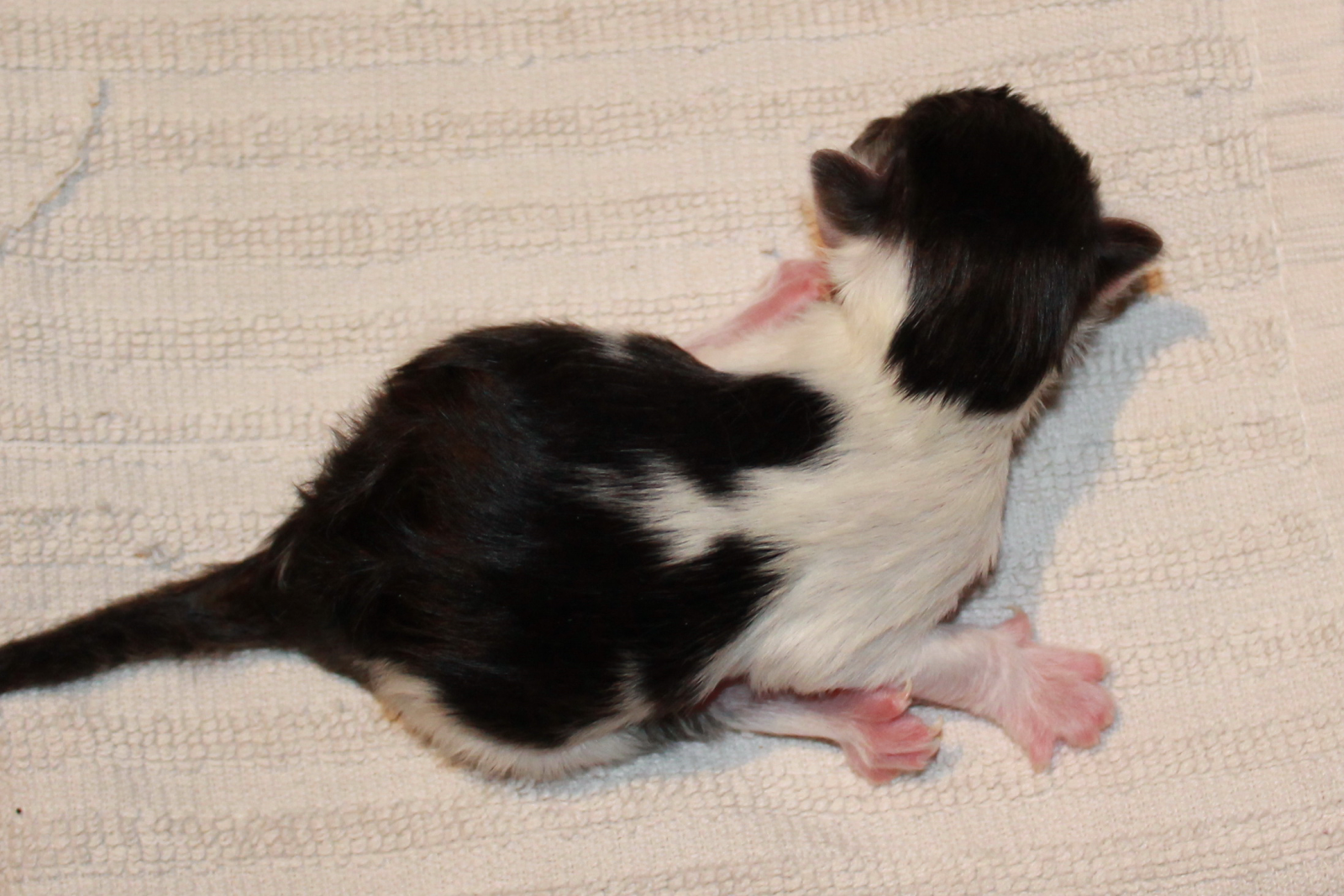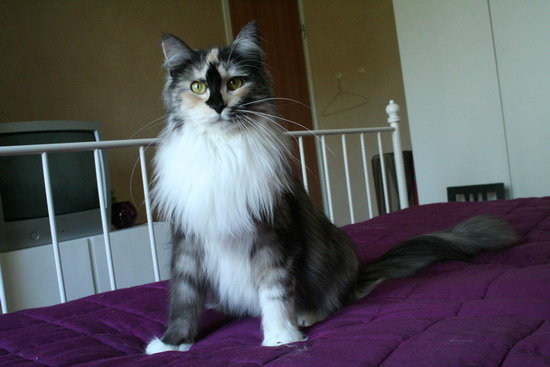We have long believed that white, also known as dominant white, and white spot have been two completely separate traits, but they are in fact both variants of the KIT gene. White spots can look in a variety of ways, from a small medallion here or there on the body up to an almost entirely white cat, like a harlequin or van.
W - trait for all white, dominant trait
Ws - white spot
w - not white spot
wg - trait for Birman-socks type of white spot, recessive trait
Combined, you get:
WW or WWs or Ww or wwg = White cat
WSWS = White spot (bicolor, harlequin and van)
Wsw or Wswg = White spot (everything from medallion to bicolor)
ww or wwg = non white
wgwg = white spot of the type that gives Birman socks
The boundary between homozygous and heterozygous Ws white spots is not always clearly visible, which means that both heterozygous and homozygous can be bicolor.
Since white (W) is a dominant trait, this requires one of the parents to be white. This trait acts as a mask on top of the cat's other color. That means you can have a black silver tortie spotted or a black or a black torbie or maybe a red classic tabby under this white scrub. The cat thus bears a trait for a different color, but everything that these genes would have expressed is hidden behind the white. This is in contrast to the other two white-spot plants, which then do not mask the cat's color, instead, it pushes it aside. So it does not hide any color like the trait on the white cats does.
It is not uncommon for white cats to become deaf. Studies indicate that WW presents a higher risk of deafness than Ww. If the cat is WW it is basically always blue-eyed and deaf or has a hearing impairment.
There is a study suggesting that a white cat carrying the white spot trait Ws (cat genotype = WWs) has a higher risk of deafness than a white cat carrying the trait for W, without white, (genotype = Ww). Therefore, it is not advisable to mate white, with another white or white with a white spot. If you want white cats you should strive to mate a white cat with a cat that is complete without white.
The W-trait and the Ws-trait may also alter the eye color of the cats. For example, both white and white spot cats with a slightly larger amount of white may catch blue eyes. As mentioned above, it is more common in homozygous all-white cats, but you can also get it on heterozygotes. These white or white-spotted cats can also sometimes be “odd-eyed”, which means that one eye is blue while the other has a normal yellow or green color. Blue-eyedness seems to be linked to a higher risk of deafness in white cats. The recessive white spot, wg, is not linked to either deafness or blue-eyedness.
|
|
Almost newborn |
|
Dagdrivarn Extra Evalia |
Newborn |
|
Dagdrivarn Hot’n Sweet |
Newborn |
|
Dagdrivarn Madame Laïka Melangé |
Newborn |
By:
Malin Sundqvist (www.dagdrivarn.se)
and
Ulrika Olsson (www.ylletrollets.se, www.pawpeds.com)

